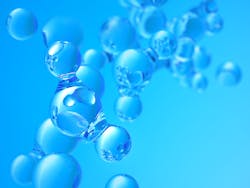The Tough Life of Hydraulic Fluid
Does a hydraulic pump produce pressure or flow? Proponents of “flow makes it go” contend that a hydraulic pump creates flow, not pressure. Their argument states that a hydraulic pump’s gears, pistons, vanes, or whatever, cause the fluid to flow out to the hydraulic circuit. In an ideal case, you can neglect resistance to flow from fluid viscosity, friction in piping, tubing, fittings, etc. The contention, then, is that the fluid will flow back into the system’s reservoir without exhibiting any measurable pressure.
Negligible pressure will exist in the hydraulic circuit until some sort of load is induced. The load can be external, such as a bucketful of earth in an excavator; or it can be internal, such as a small orifice in a valve. The load resists (works against) flow, and the result of this resistance is measurable fluid pressure. So with no load or serious flow restriction, there is no pressure—or very little.
On the other hand, physics tells us that pressure differential causes fluid flow. Subject any fluid to a pressure, and it will flow to a location of lower pressure. We can observe this everywhere. The air (fluid) in an inflated tire is not flowing, but if you cut a hole in the tire, the pressure in the tire causes the air to flow out to the atmosphere. The air flows from a volume of higher pressure to one of lower pressure.
The same is true with a hydraulic pump. As rotating gear teeth unmesh, they push fluid to the outlet side of the pumping chamber. This push (force) pressurizes the fluid, so it flows out of the pump to where pressure is lower. So if the pump converts mechanical torque into fluid pressure, and this pressure causes the fluid to flow out of the pump, why the controversy? I think the “flow makes it go” illustration is simply a tool to help instruct people in reading circuit diagrams. The way I learned was to think of myself as a molecule of hydraulic fluid being chased by other molecules. My goal is to reach a safe haven where I can relax and rest—the reservoir.
As I get pushed out of the pump, I rush through tubes, hose, and fittings, trying to stay ahead of all the molecules being pushed out behind me. I see an open valve ahead, so I squeeze through there, assisted by molecules pushing me from behind (backpressure). If I’m lucky, the valve will be shifted so I can take a direct route right into the reservoir.
But I’m rarely lucky, so I keep running through the only route ahead of me: another maze of tubes, fittings, and hose until I finally reach the volume in the cap end of a cylinder. But there are other molecules in here, and more keep pouring in after me. As we all get squeezed tighter and tighter, eventually the wall at the far end (the piston) begins to move. But our relief is short lived because more molecules keep pouring in as fast as the piston moves.
Eventually, the piston stops, but the pressure doesn’t let up. However, when I hear the directional valve I came through shift, molecules that entered the cylinder after me start rushing out the cap-end port. But now the piston starts coming toward us, so I run for the only exit, the cap-end port. Other molecules are also trying to get out (backpressure again) but I eventually shove my way through and find myself back in the winding tunnel I came in.
After a quick dash through the directional valve, there’s only one path to take: a trip through another maze and a short fall into the reservoir. It’s like a giant hot tub for all us molecules. But I won’t be here long because today’s design trend is to make reservoirs smaller. So in a few minutes I’ll be back on another journey through the hydraulic system.
Sounds like a bad week at work, doesn’t it?


